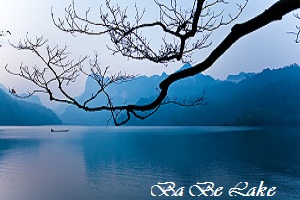- Vietnam Overview
- Main Cities in Vietnam
- Regions in Vietnam
- Other Cities in Vietnam
- Getting to Vietnam
- Getting Around Vietnam
- Language in Vietnam
- Education in Vietnam
- Vietnam Activities
- Vietnam Attractions
- Vietnam Money & Shopping
- Eating and Drinking in Vietnam
- Dress Code in Vietnam
- Gift Giving in Vietnam
- Public Behavior in Vietnam
- Art Performance
- Custom and Habits
Bac Can Province
 Bac Can is famous for many interesting sights such as Ba Be National Park, Dau Dang Waterfall, Ba Be Lake, Puong Cave
Bac Can is famous for many interesting sights such as Ba Be National Park, Dau Dang Waterfall, Ba Be Lake, Puong Cave
Geography
Bac Can is a mountainous province, sharing its border with Cao Bang Province to the north, Tuyen Quang Province to the west, Lang Son Province to the south-east, and Thai Nguyen Province to the south. The topography is mainly midland, mountainous. The province has a complex network of rivers and springs.
Bac Can is divided into: one town municipality Bac Can and seven rural districts: Ba Be District, Bach Thong District, Cho Đon District, Cho Moi District, Na Ri District, Ngan Son District, Pac Nam District, four precincts,six towns under districts and 112 communes
Climate: There are two seasons: dry and cold lasts from April to October and hot and rainy from November to December. The cold season lasts longer in the north region. The annual average temperature is 25ºC. The annual rainfall is about 1,400mm - 1,800mm. The weather has drizzling rain and high humidity in March, April and August.
Tourism
Bac Can has natural of mineral and forest, especially primitive forests with rich of flora and faune. Aside that, natural gives the province many interesting sights such as Ba Be National Park, Dau Dang Waterfall, Ba Be Lake, Puong Cave. Bac Can used to be a cradle of Vietnam revolution so it has many revolutionary relics as ATK in there.
Bac Can is famous for Ba Be Lake Spring Festival with many rituals and activities as boat racing, wrestling, dancing, nem con (con throwing). The festival attracts a lot of people around the region.

